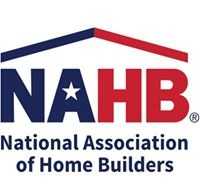WASHINGTON, D.C. – November 7, 2013 – (RealEstateRama) — The National Association of Home Builders (NAHB) told Congress today that an effective housing finance reform plan must include a federal backstop to ensure that 30-year, fixed-rate mortgages and reliable mortgage financing for multifamily housing remain readily available and affordable.
NAHB in National News |
NAHB in Social Media |
Testifying before the Senate Banking Committee, NAHB Chairman Rick Judson, a home builder from Charlotte, N.C., said that NAHB is a strong proponent of housing finance system reform.
“NAHB believes that the U.S. housing finance system must be multifaceted with both competing and complementary components, including private, federal and state sources of housing capital,” said Judson. “To achieve this, it is important to reform and restructure the conventional mortgage market and also improve other parts of the housing finance system, including FHA, the Federal Home Loan Banks and state housing finance agencies.”
The key to the sustainability of the 30-year, fixed-rate mortgage is a securitization outlet, because originators do not have sufficient capacity to hold such long-term assets which are funded with short-term deposits.
Currently, Fannie Mae and Freddie Mac provide the securities vehicle along with a government guarantee for investors.
“There are serious doubts on whether a private housing finance system would be capable of supporting this type of product without some government backing,” said Judson. “At a minimum, the cost and terms of 30-year mortgages would be significantly less favorable under a totally private system and many fewer families would be eligible for home loans.”
NAHB recommends establishing a new securitization model for single-family and multifamily mortgages where Fannie Mae and Freddie Mac would be transitioned to private housing finance entities that would aggregate mortgages into securities for sale to investors worldwide. Private capital from mortgage originators and securities issuers would be in the first loss position, but the principal and interest for investors in the mortgage-backed securities would be guaranteed through a privately capitalized, federally-backed insurance fund. The new system would be overseen by a strong and independent regulator.
NAHB believes that the Housing Finance Reform and Taxpayer Protection Act (S. 1217), introduced by Sens. Bob Corker (R-Tenn.) and Mark Warner (D-Va.), represents an important bipartisan step in the debate on overhauling the U.S. housing finance system and incorporates many of the elements recommended by the association.
“NAHB looks forward to continuing to work with Senate Banking Committee Chairman Tim Johnson (D-S.D.), Ranking Member Michael Crapo (R-Idaho), and all the members of the committee to achieve comprehensive housing finance reform that maintains the proper level of federal support necessary to provide much-needed long-term stability for this critical sector of the economy,” said Judson.
The array of federal and state government programs that have been developed over the years in response to identified needs are essential elements in ensuring that there are affordable options for providing housing. Therefore, NAHB believes that the future housing finance system must be viewed as more than the private conventional market.
“The Federal Housing Administration’s single-family mortgage programs are a unique and vital component of the housing finance system, providing access to homeownership for underserved communities, primarily first-time home buyers, minorities and those with limited downpayment capabilities,” he said.
The FHA has also historically played an important role in the financing of multifamily rental housing.
“These products have allowed the construction of needed affordable and market rate rental housing units, and enabled property owners to acquire, refinance, rehabilitate and preserve the nation’s existing stock of rental housing,” said Judson.
He also noted that programs operated by the U.S. Department of Agriculture’s Rural Housing Service have played an important role in providing mortgage credit in underserved rural areas.
Moreover, the VA home loan guarantee program is an integral component of housing finance for our nation’s service members, Judson said, and provides an outstanding example of how a low-to-no downpayment program can perform even in difficult economic markets like we recently experienced.
Another significant factor in the quest to provide affordable homes and rental housing is the cost and availability of the credit required to produce such housing. Builders continue to have difficulty accessing production credit from the traditional financial institution sources, forcing some to turn to more costly non-traditional equity and debt sources.
“NAHB greatly appreciates the efforts of Sens. Robert Menendez (D-N.J.) and Johnny Isakson (R-Ga.) for introducing the Home Building Lending Improvement Act (S. 1002), legislation that addresses several regulatory barriers that inhibit access to construction credit,” said Judson. “We hope that this committee will consider this legislation and other regulatory barriers to both construction and broader small business credit.”







